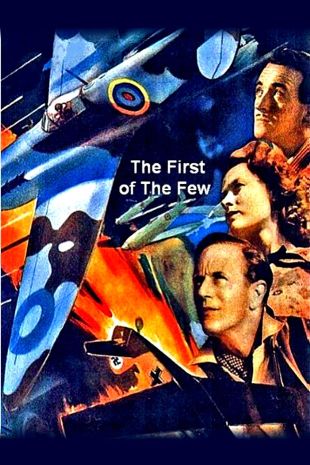
Leslie Howard's The First of the Few was, like the other projects in his tragically brief career as a director/producer, a film spawned by the exigencies of war. The story of aeronautical engineer R. J. Mitchell and the Spitfire fighter was a natural for a movie, a tale of sacrifice and triumph rivaling that of Lord Nelson that helped decide the fate of a nation -- a fate that had only become clear perhaps a year before this picture went into production. Howard was a natural as a director, and knew how to quietly dominate the screen as an actor, but the presence of David Niven as his pilot friend Geoffrey Crisp and Rosamund John as a fictionalized rendition of Mitchell's wife, prevent this from being a near-solo effort a la Orson Welles's work. They both turn in involved, convincing performances, with John's reaction in particular, in a pivotal scene near the end of the movie, one of the most quietly wrenching emotional moments that one will find in a film of this type and era. Niven's character is actually a composite of two test pilots who were part of Mitchell's circle of friends. There is a certain stiffness to the movie, especially in the early scenes, that modern audiences may find off-putting, although the overall film achieves a bracing level of excitement, helped in no small measure by Sir William Walton's music. The latter, extracted as a concert piece ("The Spitfire Prelude and Fugue") subsequently achieved a long life of its own in the concert hall (and set the stage for what would have been the last film music triumph of Walton's career, his music for the film Battle of Britain a generation later, had the producers of the latter movie not gotten cold feet about its commercial prospects and substituted another score). The movie also achieved some unintended importance in its use of actual wartime aerial combat footage, a portion of which seems to have disappeared from circulation in any other form, and the presence of several celebrated World War II Royal Air Force fighter pilots in the opening and closing sequences.
